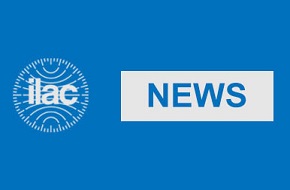
‘Improving Regulatory Governance: International Standards and the WTO TBT Agreement’, Erik Wijkström, Devin McDaniels, Issue 5, pp. 1013–1046 (October 2013)
Read article: http://www.kluwerlawonline.com/abstract.php?area=Journals&id=TRAD2013034

Article 9 of the World Trade Organization’s Agreement on Technical Barriers to Trade — the TBT Agreement — requires that members, wherever practicable, formulate and adopt international systems of conformity assessment where a positive assurance of conformity with a technical regulation or standard is required. Article 6 of the agreement specifically recognizes accreditation as a means for realizing positive assurance:
“6.1.1 adequate and enduring technical competence of the relevant conformity assessment bodies in the exporting Member, so that confidence in the continued reliability of their conformity assessment results can exist; in this regard, verified compliance, for instance through accreditation, with relevant guides or recommendations issued by international standardizing bodies shall be taken into account as an indication of adequate technical competence.”
The TBT Committee has recognized that the ILAC MRA is designed to facilitate acceptance of test results across economies and that acceptance of these results facilitates trade.

The CPSC issued regulations to recognise test data associated with children’s products coming from laboratories accredited by an ILAC MRA signatory accreditation body. CPSC registers laboratories that can perform compliance testing based on a simple application process identifying the relevant scope of accreditation from an ILAC MRA signatory accreditation body.
This move enabled CPSC to leverage its limited resources, yet provide for the acceptance of test data originating from the countries of export and reducing the need for redundant testing upon import.
Many children’s products continue to be added within the scope of this requirement for accreditation.
Further information available at http://www.cpsc.gov/cgibin/labregentry/
“The MRA has had a tremendous impact on our group. With all the products from manufacturers around the world – cribs and bunk beds from China and the United Kingdom, bike helmets and baby walkers from Taiwan and Italy – knowing that they have all been through an accepted standard of testing from an accredited lab gives us a greater level of confidence in those products. It provides a sense of consistency in quality.”
Scott Hey, program manager of the CPSC Office of Hazard Identification and Reduction

Testing of crash mitigation equipment and devices need to be tested in accordance with Federal Highway Administration (FHWA) specifications by a laboratory accredited by an ILAC MRA signatory accreditation body.
The FHWA determined that using accredited laboratories will improve the agency’s ability to trust that crash test laboratories are qualified to conduct and evaluate tests intended to determine the crashworthiness of roadside safety features. FHWA also determined that laboratory accreditation is widely recognised as a reliable indicator of technical competence.
Further information available at http://safety.fhwa.dot.gov/roadway_dept/policy_guide/road_hardware/
“Even though being part of the MRA has had no impact on the work of the agency, the overall requirement for crash tests to be conducted by accredited laboratories has improved our confidence in the results received.”
Nicolas Armitovich, FHWA highway engineer

Testing of equipment and devices used on Coast Guard vessels need to be tested in accordance with Coast Guard specifications by a laboratory accredited by an ILAC MRA signatory accreditation body.
This policy decision cited scheduling delays and increased expenses as a reason for using laboratories accredited by an ILAC Signatory rather than the use of Coast Guard-employed inspectors. Additionally, the USCG called out the modern trading system where many manufacturers produce lifesaving equipment for multiple-flag vessels, and must have their equipment approved by each nation. Using third-party accredited testing laboratories would allow manufacturers to satisfy requirements from multiple nations, which avoids the need for duplicative tests.
Kurt Heinz, chief, life saving and fire safety, U.S. Coast Guard on the benefit of the ILAC MRA:
“Obviously, avoiding duplicative tests saves a lot of time. A lot of the safety materials we use in ship construction, like the fire-resistant coatings we use on bulkheads and other areas, are manufactured in Europe and Asia, so being able to accept and depend on test results from labs in those countries makes sense. And, less time spent doing routine approval work translates into more time spent on policy and standard development – which is a good thing.”

The U.S. General Services Administration requires star of life ambulances procured by the U.S. government to be tested by an independent laboratory accredited in accordance with ISO/IEC 17025 by an accreditation body that is a signatory to the ILAC MRA.
All of the GSA’s ambulance standards are used to validate that their contractors are producing a quality product, and the MRA is one tool among many in their assessment of quality. They accept accreditation from MRA signatories but still perform source inspections on each ambulance ordered and procured for federal agencies under a GSA contract.
The agency still does its own inspection but has confidence that the critical components of the ambulance have been tested by competent laboratories.

Environmental laboratories performing analysis in support of restoration work for the Department of Defence (DoD) must be accredited by an accreditation that is a signatory to the ILAC MRA.
The DoD Environmental Laboratory Accreditation Program uses only accreditation bodies that are ILAC MRA signatories. A Cooperative agreement must be agreed, and the DoD requires additional quality control requirements supplementing ISO/IEC 17025.
Further information is available at http://www.navylabs.navy.mil/

The Food and Drug Administration (FDA) issued draft guidance on data packages that addressed its preference to have food tested by laboratories accredited by an ILAC MRA signatory accreditation body to assure data credibility in 2008.
The Food Safety Modernization Act, enacted on Jan. 4, 2011, gives a statutory mandate to the FDA for recognition of laboratory accreditation associated with the testing of food. FDA is developing regulations to implement this provision.
The Food Safety Modernization Act calls for laboratory accreditation with FDA appearing to lean toward using the ILAC MRA to recognise accreditation bodies. The FDA also supports US state public health laboratories to get accredited by ILAC MRA signatories by August 2017.